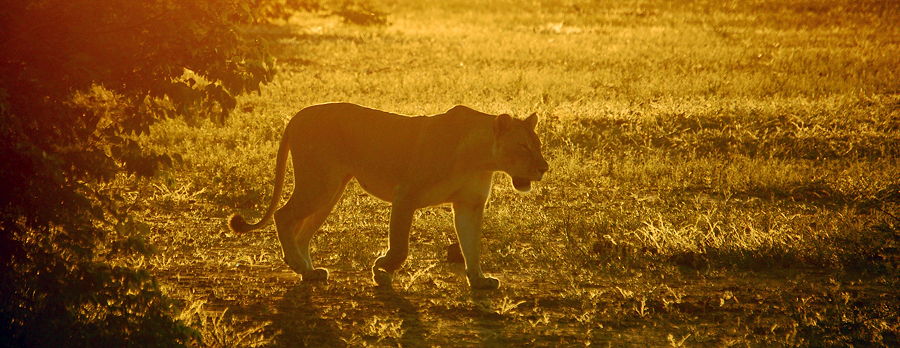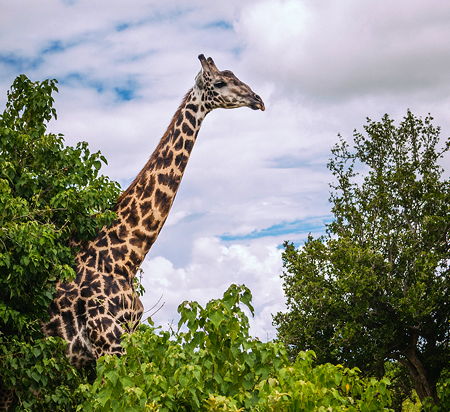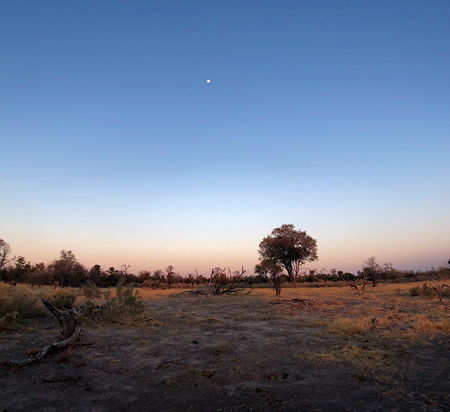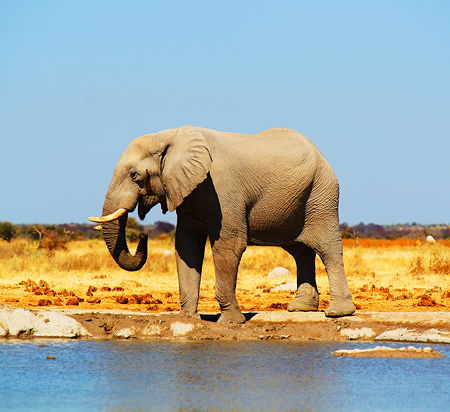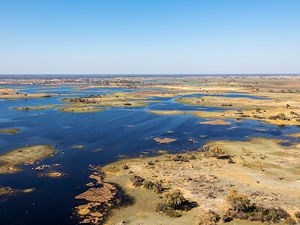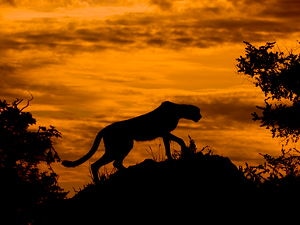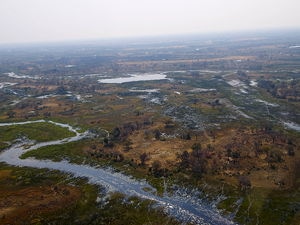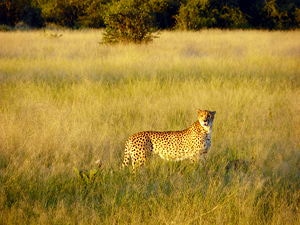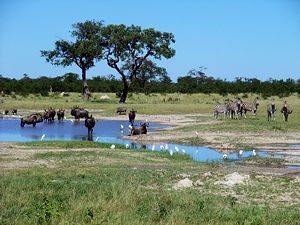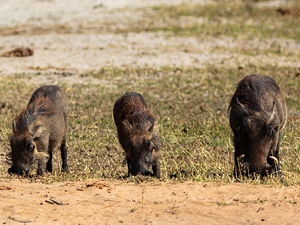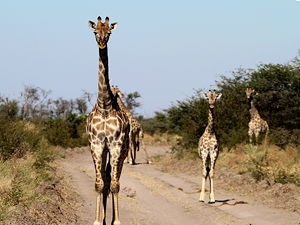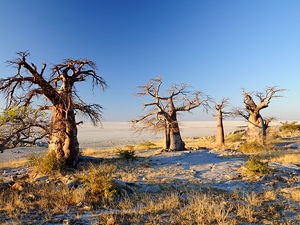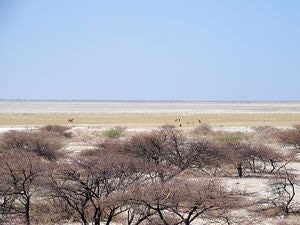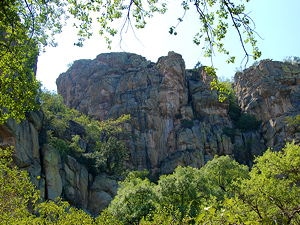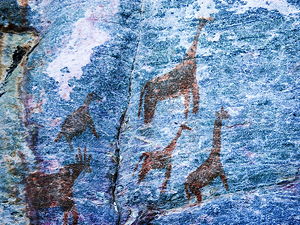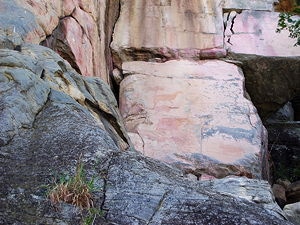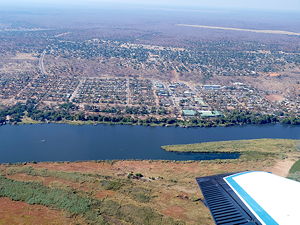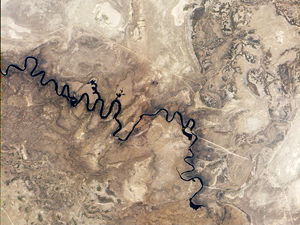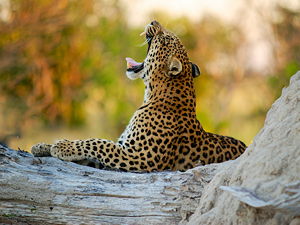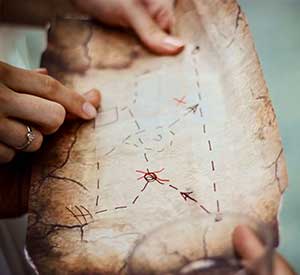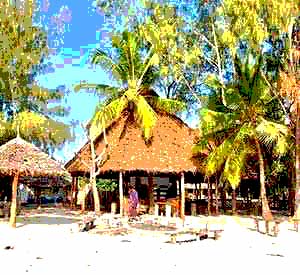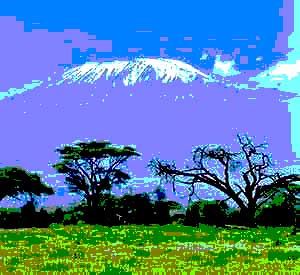Things to do in Botswana, Africa
Africa is synonymous with vast landscapes, nomadic tribes and wildlife safaris. But few places on the continent can offer the same variety of things to do as Botswana.
Botswana (formerly Bechuanaland) is a landlocked country of 2 million people bordered by South Afraica, Zimbabwe and Namibia.
Seventy percent of Botswana's territory is taken up by the Kalahari, one of the most famous deserts in Africa. Botswana is also home to the largest inland delta in the world, the Okavango; great safari at the Chode National Park; and one of the world's largest salt pans--the Makgadikgadi Pans.
These ecological features are complimented by grasslands, savanahs and the modern capital city, Gaborone, which is responsible for much of Botswana's impressive GDP (one of the highest per capita on the continent).
Wild and unspoiled, Botswana is also home to the ancient San people, free roaming lions, and an incredible eco-system. It is one of the world's last true wilderness areas. Here are the best 5 things to do.
1. The Okavango Delta
A mokoro is a dugout canoe made from the local sausage tree. This traditional boat is the method of transportation which takes you into the heart of the Okavango Delta.
The Okavango Delta
The Okavango Delta is massive inland expanse of swamp and water. It is formed by the waters of the Okavango River, which drain into the Delta until they can be evaporated back into the atmosphere or consumed by hungry animals and plants.
The Delta reaches a maximum area of about 15,000 square kilometres each March - June -- once the summer rainfall from the Angolan Highlands has completed its 1,000 kilometre journey.
That is followed by the greatest migration Mother Earth has to offer: about 200,000 animals make their way to the Delta each July to September, seeking to escape from the baking Kalahari Desert. In total, over 150 species of mammals and reptiles, and over 500 species of birds, flock here each year. MAP
A trip in a dugout canoe
Guided by a professional Poler, your mission for the next few hours is to lie back in the canoe and drink in the scenery as you glide amongst the waterways, brushing past overgrown reeds while you keep a lookout for nearby hippo, lion, hyena, elephant or the many other animals who make the delta their home.
Truly unique and utterly relaxing, a mokoro ride at sunset in particular is one of the most memorable experiences you can wish for on a trip to Africa.
Embracing the surrounding darkness, a campfire is a fun way to interact with the many local guides who accompany you into the delta, while falling asleep to the sounds of the wild and stars flickering between the trees above is simply unforgettable.
Following breakfast you will be invited to take a walking safari or trip to another island nearby in search of animals, but regardless of the interesting things to do in the Delta, to experience the bio-diversity and wonderful eco system is always the unexpected highlight of a trip into this uniquely beautiful wilderness.
2. Chobe National Park
Next to the borders of Zimbabwe and Zambia, the town of Kasane in the northeast corner of Botswana is renowned for some fascinating things to do and it offers unrivalled safari options in what can often appear as a microcosm of Africa.
Although the town itself is largely quiet and uneventful, there is the odd occasion when a stray lioness will make her way to the edge of Kasane by mistake and naturally, such an event is a cause for panic amongst the locals who have long respected the fearsome king of the jungle by keeping their distance.
While this may not happen all too often, it still emphasizes the exposed nature of the area and the abundance of wildlife. Begin your adventure in Kasane with a safari along the Chobe River, a wide expanse of water infested with hippo, crocodile and some of the largest herd of elephants in Africa.
Affordable and most certainly of value, the boat trip is a sublime mix of relaxation, wildlife viewing and spectacular scenery as you make your way further down river and find yourself surrounded by African wilderness and wildlife.
Following the river safari, the best way to spend an evening prior to a safari in the National Park is to visit, or stay in, one of the many luxury riverside lodges where there are many things to do.
Enjoy a cocktail while the sun sets over the river, take a massage in one of the many private rooms or marvel at the monkeys swinging through the trees above.
Given that animals are most active in the half light of morning, a Chobe safari will usually begin before sunrise in order to reach the park interior when lions, hyena, cheetah and other predators are hunting for prey.
Winding through dirt tracks in Chobe is an unmistakable experience in which you will feel entirely engrossed in the surrounding wild and almost vulnerable to what will happen next.
Creeping around corners, between bush and beneath acacia trees, elephant are common while the hippo can often be seen making its way back to the river after a night grazing in the safety of darkness.
Although no guide will ever guarantee sightings, Chobe National Park is one of the best places to see wildlife in Africa. MAP
3. Makgadikgadi Pans
One of the largest salt pans in the world, Makgadikgadi was once a lake covering an enormous 10,000km² of North Eastern Botswana, although for thousands of years since it has been the same dry and inhospitable terrain it is today.
Traveling from Maun in the east you will pass through the Nxai Pan National Park, an endless landscape known for having a healthy lion population, while from the other direction you are mostly likely to encounter swamps in the wet season and some spectacular Baobab trees which the locals believe to hold the spirits of their ancestors.
Even though there are several entry points from which to reach the Makgadikgadi Pans, the best town to use as a base is the small town of Gweta.
Unlike many African towns, Gweta is spread out over a large area which seems a little strange given this must seem inviting for local wildlife to pay a visit. There may not be a huge number of things to do but the town is perfectly safe, the locals are very friendly and a number of lodges in town offer very comfortable accommodation, some with swimming pools.
Due to the isolated nature of the bush beyond Gweta, the sandy terrain and confusing network of trails, the best way to explore the Makgadigadi Pans is by taking a tour with an experienced guide.
While this may not seem ideal for more independent travellers, the benefits of having a professional guide are quickly apparent when a seemingly empty stretch of landscape is brought to life with explanations of the underlying eco-system and many subtle wildlife tracks along the way.
The Pans are also home to a particularly clever animal that many people arrive with the sole intention of finding, the meerkat. Foraging in the bush and digging tunnels to escape any nearby predators, witnessing a mob of meerkats keep lookout and organise themselves is an incredible sight to behold.
Of course there is always the chance you might happen across other wildlife on a trip to the Makgadikgadi, but the real attraction is the journey itself and the expansive salt pans which appear entirely isolated in the middle of African bush.
An authentic experience in genuinely unspoiled and isolated African landscapes, a trip into the Makgadikgadi Pans not only guarantees a spectacular sight at the end, but also a great adventure along the way. MAP
4. Tsodilo Hills
Little known and less visited than most parts of the country, Tsodilo Hills is located in an isolated pocket of Botswana to the west of the Okavango Delta and close to the Namibian border.
Rising dramatically out of the earth, the majestic rock formations in Tsodili are not only a rare in this part of the world but they are also an entirely awe-inspiring sight.
Separated into three hills, it is said that each enormous rock is a representation of the mother, father and child. Captivating and mysterious, the local San people who live in this area have long referred to Tsodilo Hills as magical and a resting place place for the spirits of their ancestors.
Adding to the intrigue of the area, there are also many ancient San rock paintings in the area which illustrate how local tribes have inhabited the area for thousands of years.
As a means of explaining just how ancient and significant is the history around this areas, an early iron age site in Tsodilo has produced stone carving tools, pottery and beads dating back to the year 700 AD.
Visiting Tsodilo Hills is possible on a tour, but ideally the best way to experience the beauty of this area is to take a two-day roadtrip from Maun and camp overnight in the well preserved camp grounds next to the Tsodilo Hills.
While there are many animals in the area such as buffalo, elephant and the elusive leopard, the campsite is fenced off and usually attended to by a local guard.
An excellent museum is amongst the main things to do at the foot of the hills but undoubtedly, the best way to explore the area and learn about the San rock art, hills and local area, is by taking a walking tour with one of the friendly locals who are always nearby and enthusiastic to share their knowledge with visitors.
Expect another campfire surrounded by the sounds of the wild, an African sky full of stars and a truly immersive experience.
Visiting Tsodilo Hills is one of the most unique, personal and best things to do in Botswana. MAP
5. A roadtrip across Botswana
There are many more things to do in terms of safari and wilderness experiences in Botswana, but a roadtrip across the country can often be just as fueled with adventure and a variety of unique experiences.
Starting just below the Okavango Delta, drive east along the Trans Kalahari Highway where the city of Maun disappears in the rearview mirror and a mirage shimmers on the open road up ahead.
While these roads may appear straight and uneventful and the surrounding plains unassuming, this is a real African wilderness with a fascinating eco-system and an abundance of wildlife.
Reaching a signpost for Motopi, take a right turn and venture into the small village which is a prime example of a local community moving from a primitive past toward modern civilization.
Motopi is void of any real attractions as such, but this impoverished town is a great insight into the lives of everyday Setswana peoples and the isolated nature of the towns in which they live.
Enjoy a coffee next to the Boteti River where you are sure to encounter some inquisitive locals, eager to meet a rare stranger in town.
Continuing east, the Trans Kalahari passes straight through the famous Nxai Pan and Makgadikgadi National Park, home to a dry barren scrub, where lion, hyena, leopard and large herds of elephant roam in search of a vital water source.
In the centre of the park, there is of course an opportunity to venture further into the wild where an official gate provides access to some watering holes and great vantage points on which to wait for the wildlife to appear.
While it is certainly possible to venture all the way to Kasane in a single day, this is a long drive which s best broken up by an overnight stay at Planet Baobab, an incredible lodge build around, beneath and sometimes inside, some of Africa's largest Baobab trees. This lodge is an ideal place to relax and drink in the scenery, while the restaurant is also known for having some excellent local dishes.
Further along the sides of the highway will often change according to the rains, with the appearance of swamps on either side, tall trees, sandy desert or barren scrub. And then of course there is the wildlife and the famous Elephant Highway.
Reaching Nata in the far east of Botswana, the road faces north on to a long stretch of highway renowned for huge herds of elephant who either linger near the roadside or even cross in front of the vehicle.
Caution needs to be taken in such cases, but getting up close and personal with a wild elephant like this in the heart of Africa, is an unforgettable experience. Savuti Camp is another excellent place to stay overnight or watch elephants wander past from the on site restaurant.
Kasane makes for the perfect way to end the roadtrip, a safari town next to the Chobe River in the north of Botswana, but for the more adventurous, a 1 hour drive across the Zimbabwe border will take you to the great Victoria Falls, one of the wonders of the world. MAP
